Upset Stomach PMS: Understanding Nausea During Your Monthly Period
Why do some women experience nausea during their menstrual cycle. What causes stomach upset and PMS symptoms before and during periods. How can you manage nausea and other uncomfortable period symptoms effectively.
The Link Between Hormones and Period Nausea
Many women experience nausea as part of their premenstrual syndrome (PMS) or during their menstrual period. While it can be uncomfortable, in most cases it’s a normal part of the menstrual cycle. The primary culprit behind this nauseous feeling is often hormonal fluctuations.
Prostaglandins, a type of hormone-like substance, play a significant role in period-related nausea. These compounds are released during menstruation to help the uterus contract and shed its lining. However, when prostaglandin levels are high, they can cause a range of symptoms including nausea, vomiting, diarrhea, and headaches.
How Prostaglandins Affect Your Body
- Cause uterine contractions
- Can enter the bloodstream
- May affect the digestive system
- Can lead to nausea and other gastrointestinal symptoms
Do higher levels of prostaglandins always mean more severe symptoms? Not necessarily. Every woman’s body responds differently to hormonal changes, which is why some may experience intense nausea while others might have no digestive issues at all during their period.
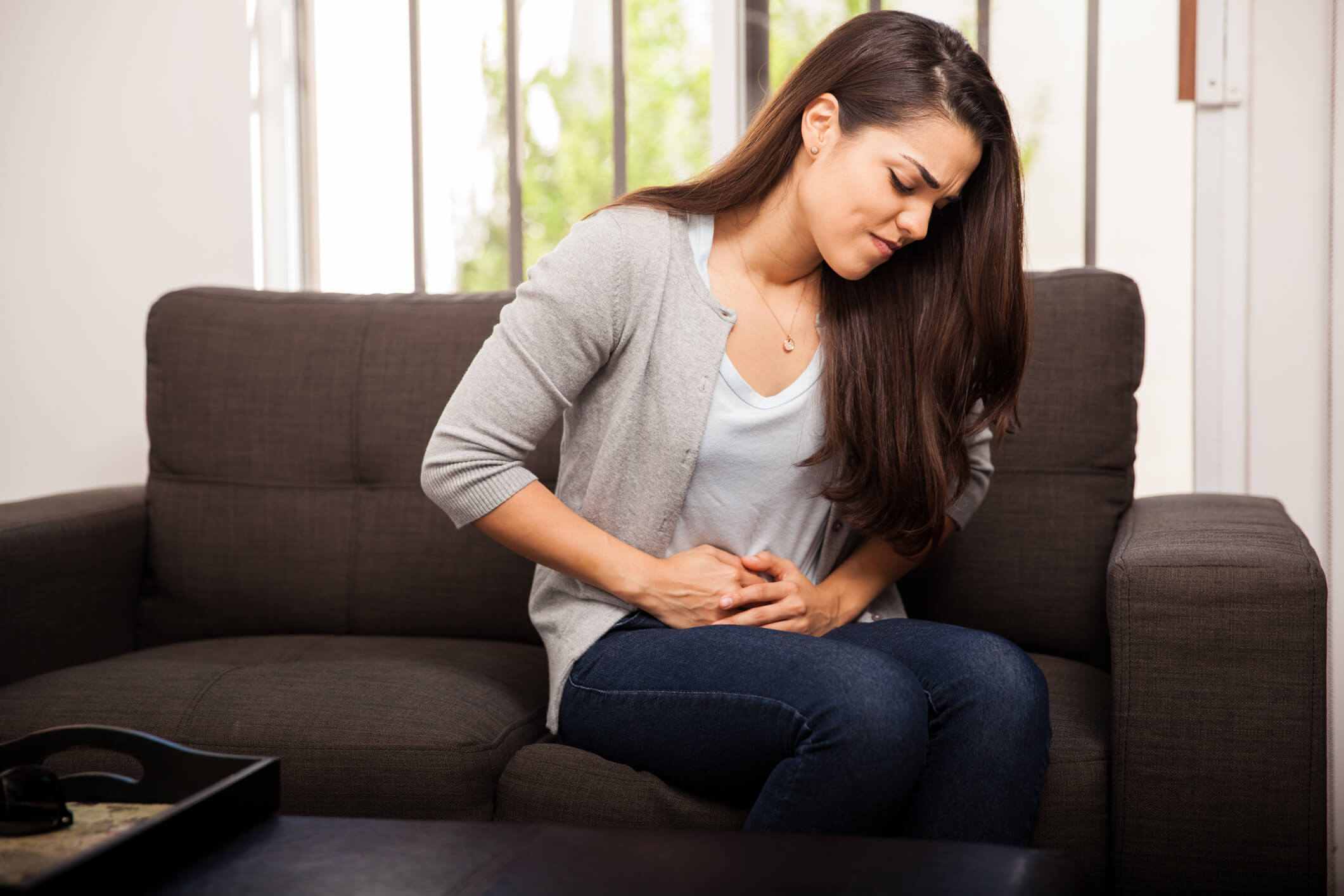
Painful Cramps and Their Connection to Nausea
Dysmenorrhea, the medical term for painful menstrual cramps, can be another source of nausea during your period. When cramps are particularly severe, they can trigger a feeling of queasiness or even vomiting in some women.
There are two types of dysmenorrhea:
- Primary dysmenorrhea: Pain caused by increased uterine contractions due to higher prostaglandin levels
- Secondary dysmenorrhea: Menstrual pain related to an underlying medical condition like endometriosis
Can severe cramps always cause nausea? While not everyone with painful cramps will experience nausea, there is a strong correlation between the intensity of menstrual pain and the likelihood of feeling nauseous.
Underlying Health Conditions That May Cause Period Nausea
While most cases of period-related nausea are benign, there are some health conditions that can cause more severe symptoms. Two serious conditions that may lead to nausea during your period are endometriosis and pelvic inflammatory disease (PID).
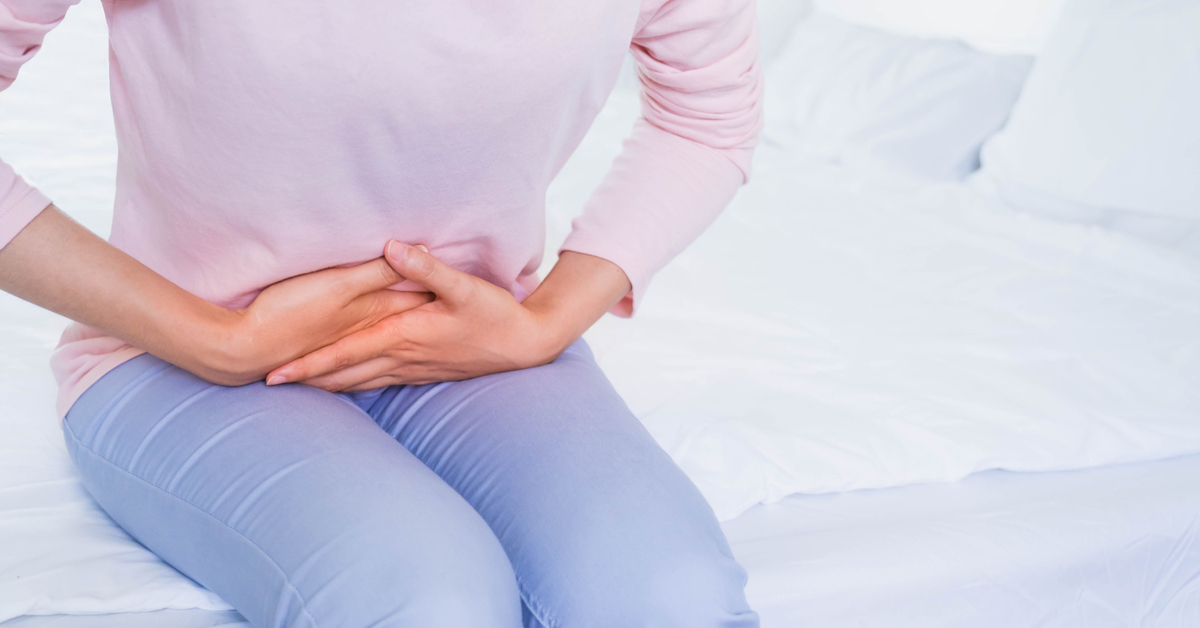
Endometriosis and Nausea
Endometriosis occurs when the tissue that normally lines the uterus grows outside of it. This can lead to a variety of symptoms, including intense pain and nausea during menstruation. In some cases, endometrial tissue can grow near the intestines, directly causing digestive upset and nausea.
Pelvic Inflammatory Disease (PID) and Its Symptoms
PID is an infection of the female reproductive organs, usually caused by bacteria moving from the vagina to the uterus, fallopian tubes, or ovaries. Along with nausea, PID can cause cramps, pain during intercourse, painful urination, and pelvic pain. In severe cases, it may also lead to fever and chills.
Is it possible to distinguish between normal period nausea and nausea caused by these conditions? While it can be challenging, nausea associated with endometriosis or PID is often accompanied by other symptoms and tends to be more severe or persistent than typical menstrual nausea.
Managing Nausea During Your Menstrual Cycle
If you find yourself battling nausea during your period, there are several strategies you can employ to alleviate your discomfort:

- Get fresh air or take a short walk
- Apply a cool compress to your forehead
- Stay hydrated by drinking plenty of water
- Stick to a bland diet to avoid irritating your stomach
- Try ginger in various forms (ale, tea, or candy)
- Sip on peppermint or chamomile tea
- Consider taking an over-the-counter antacid
Are there any specific foods that can help reduce period nausea? Some women find relief by consuming bananas, rice, applesauce, and toast – also known as the BRAT diet. These foods are easy on the stomach and can help settle nausea.
When to Seek Medical Attention for Period Nausea
While occasional nausea during your period is usually not a cause for concern, there are situations where it’s advisable to consult a healthcare professional:
- If you’ve never experienced period nausea before and it suddenly starts
- When nausea leads to persistent vomiting, causing dehydration or weight loss
- If you have a fever accompanying your nausea
- When you experience severe pain that’s not relieved by over-the-counter pain medications
- If you notice unusual vaginal discharge along with nausea
Should you wait until your next regular check-up to discuss period nausea with your doctor? If your symptoms are severe or interfering with your daily life, it’s best to schedule an appointment sooner rather than later. Your healthcare provider can help determine if your nausea is part of normal menstrual symptoms or if it indicates an underlying condition that requires treatment.
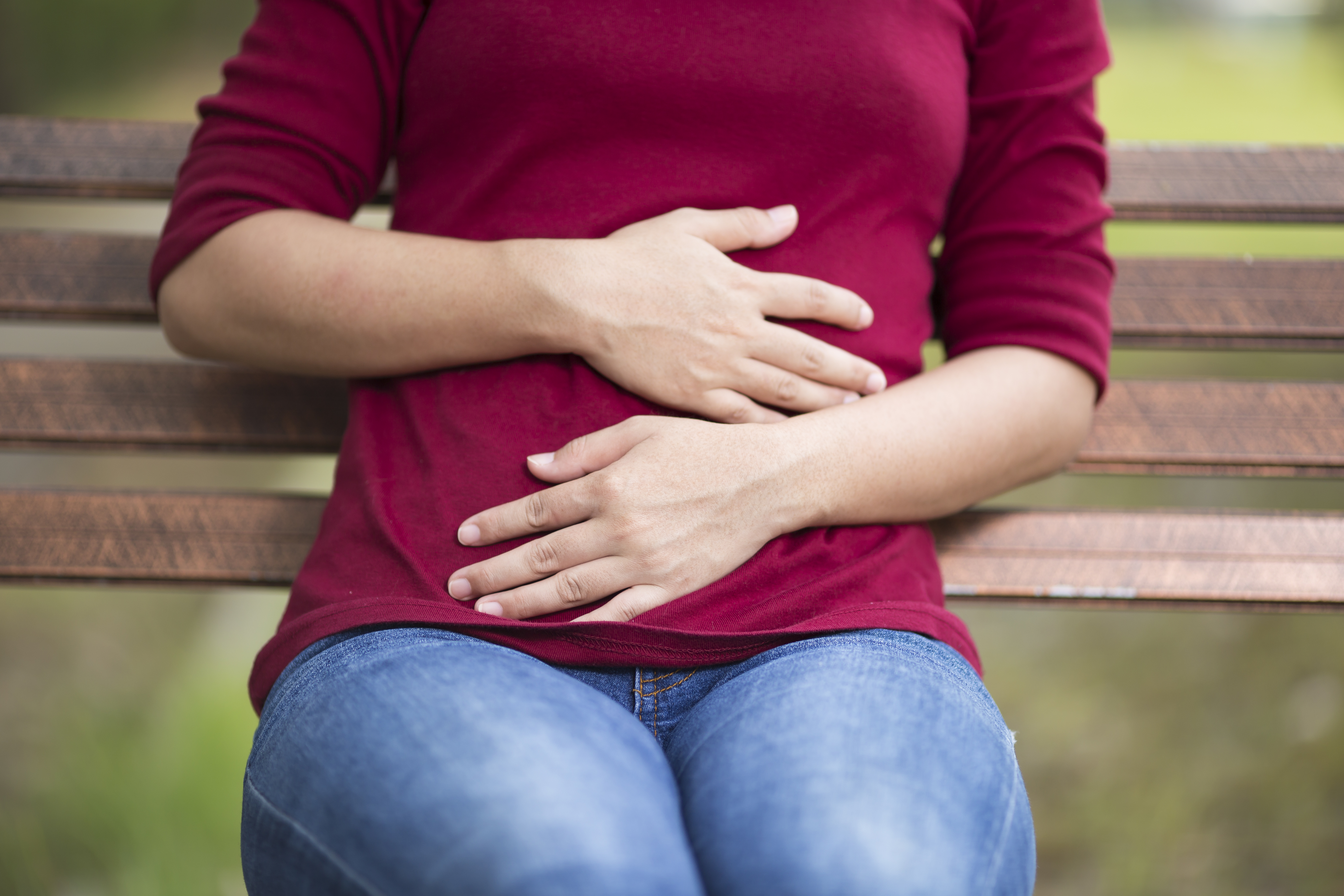
Hormonal Birth Control and Its Impact on Period Nausea
Hormonal birth control methods, such as oral contraceptives, patches, or intrauterine devices (IUDs), can have varying effects on menstrual symptoms, including nausea. For some women, these methods can help reduce period-related nausea by regulating hormone levels and reducing the intensity of menstrual cramps.
How Birth Control Can Affect Menstrual Symptoms
- May reduce the amount of prostaglandins produced
- Can lead to lighter periods, potentially reducing cramp intensity
- May help regulate hormone fluctuations throughout the cycle
- Some methods can reduce or eliminate periods altogether
Does hormonal birth control always improve period symptoms? While many women experience relief from menstrual symptoms when using hormonal contraceptives, others may find that certain methods exacerbate their nausea or cause other side effects. It’s important to work with your healthcare provider to find the best option for your individual needs.

Natural Remedies and Lifestyle Changes to Alleviate Period Nausea
In addition to medical interventions, there are several natural remedies and lifestyle changes that may help reduce period-related nausea:
Dietary Adjustments
- Increase intake of foods rich in B vitamins and magnesium
- Reduce consumption of caffeine and alcohol
- Stay hydrated with water and herbal teas
- Consider adding ginger or turmeric to your diet for their anti-inflammatory properties
Exercise and Stress Reduction
Regular physical activity can help alleviate menstrual symptoms, including nausea. Gentle exercises like yoga, walking, or swimming can be particularly beneficial. Additionally, stress reduction techniques such as meditation, deep breathing exercises, or mindfulness practices may help manage both physical and emotional PMS symptoms.
Herbal Supplements
Some women find relief from period nausea through herbal supplements. Common options include:
- Ginger root
- Peppermint
- Chamomile
- Fennel
- Dong quai
Can natural remedies completely eliminate period nausea? While these methods can be effective for many women, they may not work for everyone. It’s important to remember that natural doesn’t always mean safe, and you should consult with a healthcare provider before starting any new supplement regimen, especially if you have underlying health conditions or are taking other medications.
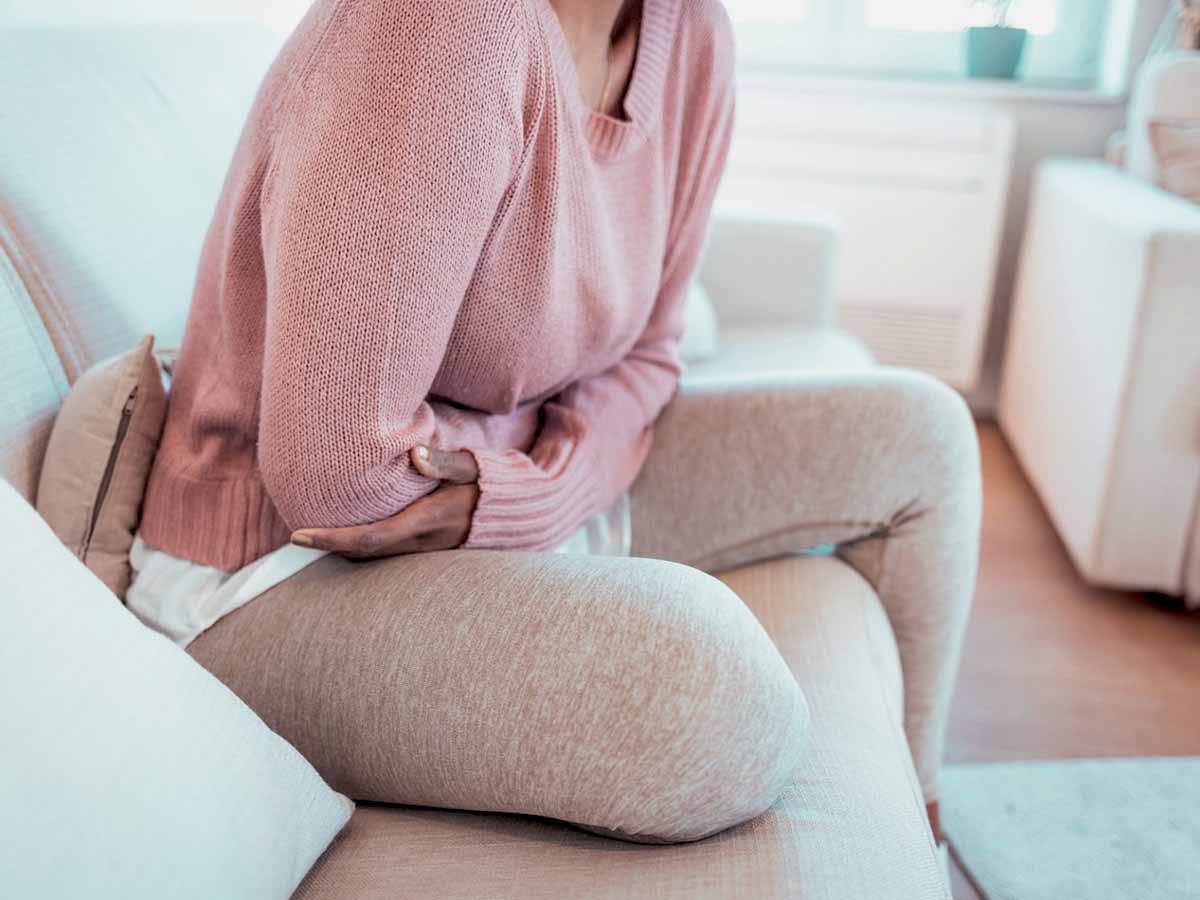
Understanding the Emotional Impact of Period Nausea
The physical discomfort of period nausea can have a significant emotional impact on women. Dealing with nausea, along with other PMS symptoms, can lead to feelings of frustration, anxiety, and even depression. It’s important to acknowledge these emotional aspects and develop coping strategies.
Strategies for Emotional Well-being During Your Period
- Practice self-care and be kind to yourself
- Communicate your needs to partners, family, or friends
- Consider joining support groups or online communities for women with similar experiences
- Explore relaxation techniques like guided imagery or progressive muscle relaxation
- Keep a symptom journal to identify patterns and triggers
How can tracking your symptoms help manage period nausea? By keeping a record of your symptoms, you can better predict when nausea might occur and prepare accordingly. This information can also be valuable when discussing your menstrual health with healthcare providers.

The Role of Nutrition in Managing Period Nausea
Proper nutrition plays a crucial role in managing period-related symptoms, including nausea. Certain nutrients can help alleviate discomfort and support overall menstrual health.
Key Nutrients for Menstrual Health
- Iron: Helps replace blood lost during menstruation
- Magnesium: May reduce cramping and bloating
- Omega-3 fatty acids: Can help reduce inflammation
- Vitamin B6: May help with mood swings and nausea
- Vitamin D: Important for overall hormonal balance
Are there specific foods that can help combat period nausea? Some women find relief by incorporating the following into their diet:
- Leafy greens (for iron and magnesium)
- Fatty fish like salmon (for omega-3s)
- Nuts and seeds (for vitamin B6 and magnesium)
- Ginger (for its anti-nausea properties)
- Whole grains (for B vitamins and fiber)
Remember, individual responses to foods can vary, so it’s important to pay attention to how your body reacts and adjust your diet accordingly.
The Future of Period Nausea Management
As research in women’s health continues to advance, new approaches to managing period-related symptoms, including nausea, are emerging. Some promising areas of development include:

- Personalized medicine approaches based on individual hormone profiles
- Advanced pain management techniques for severe menstrual cramps
- New formulations of hormonal treatments with fewer side effects
- Wearable devices for tracking and predicting menstrual symptoms
- Improved diagnostic tools for conditions like endometriosis
What can women do to stay informed about new developments in menstrual health? Staying connected with reputable health organizations, following women’s health researchers on social media, and regularly discussing your menstrual health with your healthcare provider can help you stay up-to-date on the latest advancements and treatment options.
By understanding the causes of period nausea and exploring various management strategies, women can take proactive steps to improve their menstrual health and overall quality of life. Remember, every woman’s experience is unique, and what works for one may not work for another. Don’t hesitate to seek professional medical advice if your symptoms are severe or impacting your daily life significantly.

Why Nausea Happens During Your Monthly Period
If you ever feel nauseous during your period, it may make you worry that something is wrong. But most of the time, it’s pretty normal. And it’s something many women deal with.
Hormones are usually the cause
For most women who experience nausea during or before their periods, it’s just a normal part of pre-menstrual syndrome (PMS). A hormone called prostaglandin circulates around your body during your time of the month. It can cause nausea, vomiting, diarrhea and headaches.
PMS typically begins a week or two before your period. Your breasts may be sore, and you may be constipated. Back pain, headaches and bloating or swelling may also occur.
Emotionally, you may feel anxious or irritable. Some women go through mood swings or find themselves crying for no reason. You may even have trouble sleeping.
Painful cramps can also cause nausea
If you suffer from dysmenorrhea, which is just a big word for painful cramps, you may also experience nausea. Strong pain in your back, stomach, legs, hips and pelvis can make you feel like you might throw up.
Strong pain in your back, stomach, legs, hips and pelvis can make you feel like you might throw up.
Two serious causes of nausea during your period
PMS is often harmless. However, there are two causes of nausea during your period that can be serious.
The first is endometriosis. If you have this disorder, the tissue in your uterus that sheds and causes your period each month grows outside your uterus instead. Sometimes, endometriosis is so painful that it can make you sick.
Other times, that tissue grows near your intestines. This can also make you nauseous. Other symptoms you may have include fatigue, diarrhea, constipation, bloating and heavy bleeding during your period. Some women with endometriosis also find sex to be painful. They may even feel pain while urinating or having a bowel movement.
Pelvic inflammatory disease (PID) is another serious cause of nausea during your period. Most women get this when bacteria move from the vagina to the uterus, ovaries and fallopian tubes. It can cause cramps, pain during sex, pain during urination and pelvic pain. In more serious cases, you may have a fever and chills. PID is usually due to bacteria from a sexually transmitted disease. It can also develop during childbirth.
It can cause cramps, pain during sex, pain during urination and pelvic pain. In more serious cases, you may have a fever and chills. PID is usually due to bacteria from a sexually transmitted disease. It can also develop during childbirth.
Dealing with nausea during your period
If you find yourself feeling nauseous during your period, there are some things you can do to feel better. Sometimes, just getting some fresh air or going for a walk can help. A cool compress may also do the trick.
Make sure you’re drinking plenty of water and sticking to a bland diet. Ginger may also help. Drink some ginger ale or keep some ginger-flavored candy on hand. Many people swear by drinking peppermint or chamomile tea. If none of those help, try taking an antacid.
When to see your doctor
While nausea is normal during your period, you may want to see a doctor if you’ve never felt it before. If you start throwing up, especially to the point that you’re dehydrated or losing weight, seek medical help as soon as possible.
If you have a fever, feel severe pain or have unusual discharge from your vagina, you’ll also want to contact your doctor.
If you have questions about your period, we’re here to help. Learn more about the obstetrics and gynecology services we offered at Bon Secours.
What Causes It and What Can You Do?
You may experience nausea during your period due to painful cramps or other health conditions.
It’s fairly common to experience nausea during your period. Typically, it’s caused by hormonal and chemical changes that occur during your menstrual cycle. These changes are normal and aren’t a cause for concern.
Sometimes, though, nausea might indicate a more serious condition. In this case, your nausea will likely be accompanied by other symptoms such as severe pain or fever.
Read on to learn about what causes nausea during your period, when you should see a doctor, and possible treatments.
There are several causes of nausea during menstruation. These conditions range in severity, so it’s important to pay attention to your other symptoms.
These conditions range in severity, so it’s important to pay attention to your other symptoms.
Dysmenorrhea, or painful menstrual cramps, is the most common cause of nausea during periods.
In primary dysmenorrhea, the pain is caused by increased uterine contractions. This happens when your uterine lining make larger amounts of prostaglandins, a hormone that controls uterine contractions.
In secondary dysmenorrhea, menstrual pain is related to another medical condition, like endometriosis.
Menstrual cramps usually involve the:
- lower abdomen
- hips
- thighs
- back
Sometimes, cramps can feel uncomfortable enough to make you nauseous. The high levels of prostaglandins may also enter your bloodstream and cause nausea.
Other symptoms include:
- lightheadedness
- diarrhea
- fatigue
- headache
- vomiting
PMS involves physical and emotional symptoms that occur 1 to 2 weeks before a period. The symptoms continue when your period starts but go usually away after a few days.
The symptoms continue when your period starts but go usually away after a few days.
Medical experts believe PMS is caused by the hormonal changes that take place during the menstrual cycle. PMS also involves dysmenorrhea, which can cause nausea due to pain and increased prostaglandins.
PMS may also cause:
- breast soreness
- constipation
- diarrhea
- bloating
- headache
- back pain
Emotional symptoms may include:
- mood swings
- crying spells
- anxiety
- irritability
- sleep issues
PMS symptoms affect more than 90 percent of menstruating women, so it’s extremely common. The severity of the symptoms, though, can vary quite a bit from one person to the next.
PMDD is a severe form of PMS. The symptoms are similar but serious enough to disrupt your daily life.
Like PMS, PMDD is related to hormonal changes during your menstrual cycle. However, in PMDD, the hormonal changes can lead to low levels of serotonin, a natural chemical in your brain.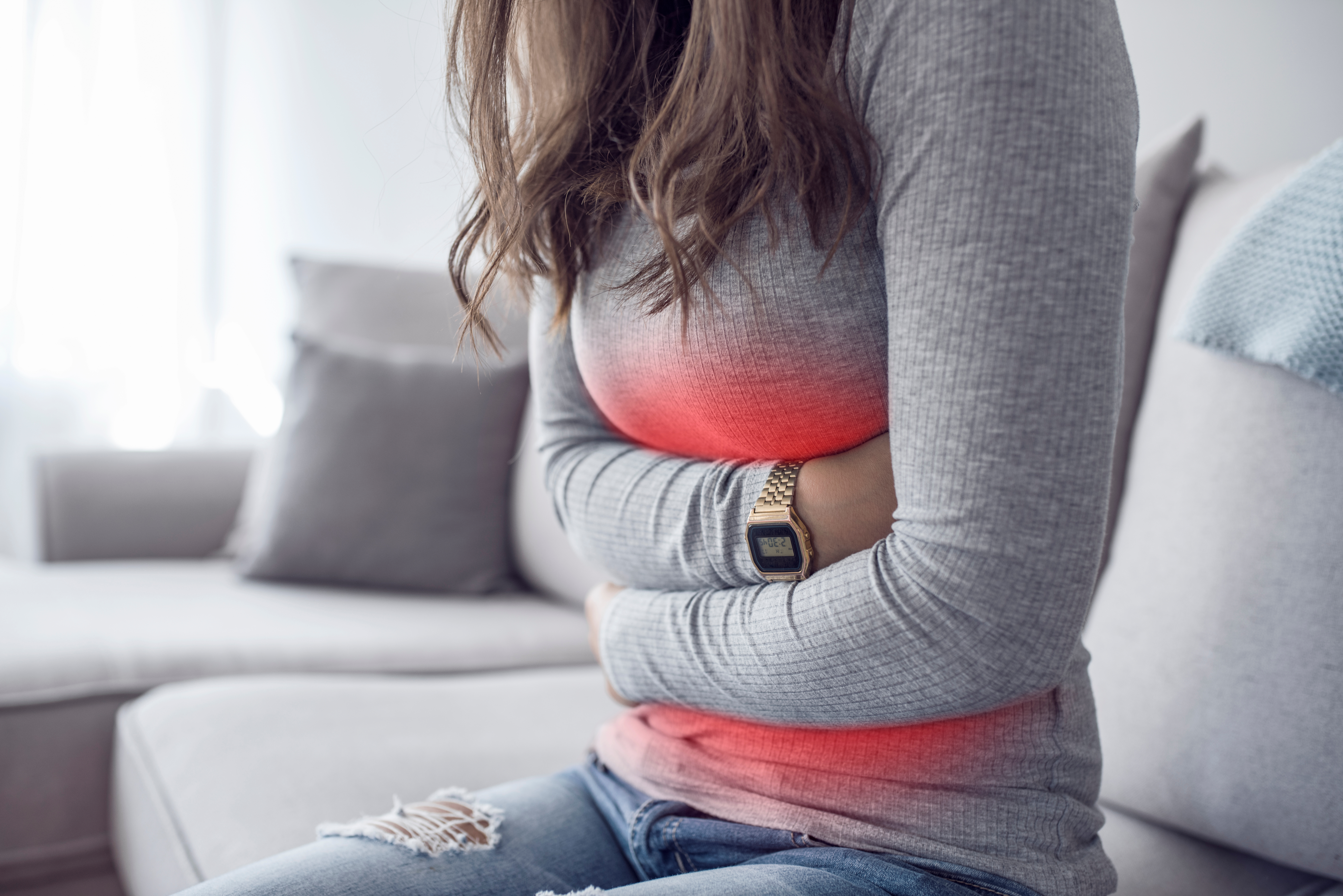 This imbalance may cause intense emotional changes.
This imbalance may cause intense emotional changes.
PMDD causes the same physical symptoms as PMS, including nausea and cramps.
Emotional symptoms include:
- irritability
- panic attacks
- trouble focusing
- severe fatigue
- paranoia
PMDD is a lot less common than PMS, and only affects about 5 percent of menstruating women.
The tissue that lines your uterus is called the endometrium. It swells, breaks down, and sheds during your menstrual period.
When similar tissue grows outside your uterus, it’s called endometriosis. It typically affects the ovaries, fallopian tubes, and tissue around the uterus.
Like the endometrium, this tissue thickens and bleeds during your period. Since it can’t leave your body like the tissue in your uterus, it expands and causes pain instead.
The pain can be so severe that it causes nausea. If the tissue grows near the intestines, it can cause nausea and vomiting, especially during a period.
Other symptoms include:
- fatigue
- diarrhea
- constipation
- bloating
- pain during sex
- painful urination
- painful bowel movements
- heavy menstrual bleeding
- bleeding between periods
- infertility
PID is an infection of the upper reproductive tract. It often happens when a sexually transmitted infection in the vagina spreads to the uterus, ovaries, or fallopian tubes.
The most common causes of PID are chlamydia and gonorrhea. Less frequently, bacteria can enter the reproductive organs after childbirth or douching.
PID doesn’t always cause symptoms. If you do have symptoms, you might have:
- lower abdominal pain
- pelvic pain
- irregular periods
- pain during sex
- abnormal vaginal discharge
- painful urination
Nausea can occur if the infection is severe. Other symptoms of severe PID include:
- vomiting
- fever
- chills
It’s important to note that PID doesn’t only cause nausea during a period. If you have PID, you’ll likely have nausea and other symptoms in between your periods, too.
If you have PID, you’ll likely have nausea and other symptoms in between your periods, too.
It’s normal to feel uncomfortable symptoms during your period. But these symptoms shouldn’t interfere with your daily life.
Visit your healthcare provider if you have:
- menstrual cramps that continue for more than 3 days
- severe lower abdominal or pelvic pain
- nausea or vomiting that persists
- fever
- abnormal vaginal discharge
The treatment your doctor prescribes will depend on the underlying cause of your nausea. Depending on the cause, treatment may include the following types of medications.
Nonsteroidal anti-inflammatory drugs
Nonsteroidal anti-inflammatory drugs (NSAIDs) are a common treatment for menstrual pain. They work by reducing prostaglandins, which, in turn, can relieve cramps and nausea.
NSAIDs are available over-the-counter, so you don’t need a prescription. Commonly used NSAIDs include:
- ibuprofen (Advil, Motrin)
- naproxen (Aleve)
- aspirin
Selective serotonin uptake inhibitors
PMS and PMDD may be treated with selective serotonin uptake inhibitors (SSRIs).![]() SSRIs are antidepressants that increase your brain’s serotonin levels.
SSRIs are antidepressants that increase your brain’s serotonin levels.
SSRIs mainly treat emotional symptoms. Plus, SSRIs can cause nausea in some people. Your doctor can recommend an SSRI that causes minimal side effects.
Oral contraceptives
Oral contraceptives, or birth control pills, are designed to prevent pregnancy. They work by controlling the hormonal changes during your menstrual cycle. This may help relieve some emotional and physical symptoms, including nausea during periods.
Generally, oral contraceptives are used to treat:
- heavy periods
- painful periods
- irregular bleeding
- endometriosis
- PMS
- PMDD
Antibiotics
If you have PID, you’ll need antibiotics. Your doctor will prescribe an antibiotic for your specific infection.
It’s important to finish your prescription, even if your nausea and pain go away. This will reduce the risk of complications.
In addition to medical treatments, some home remedies may help relieve nausea.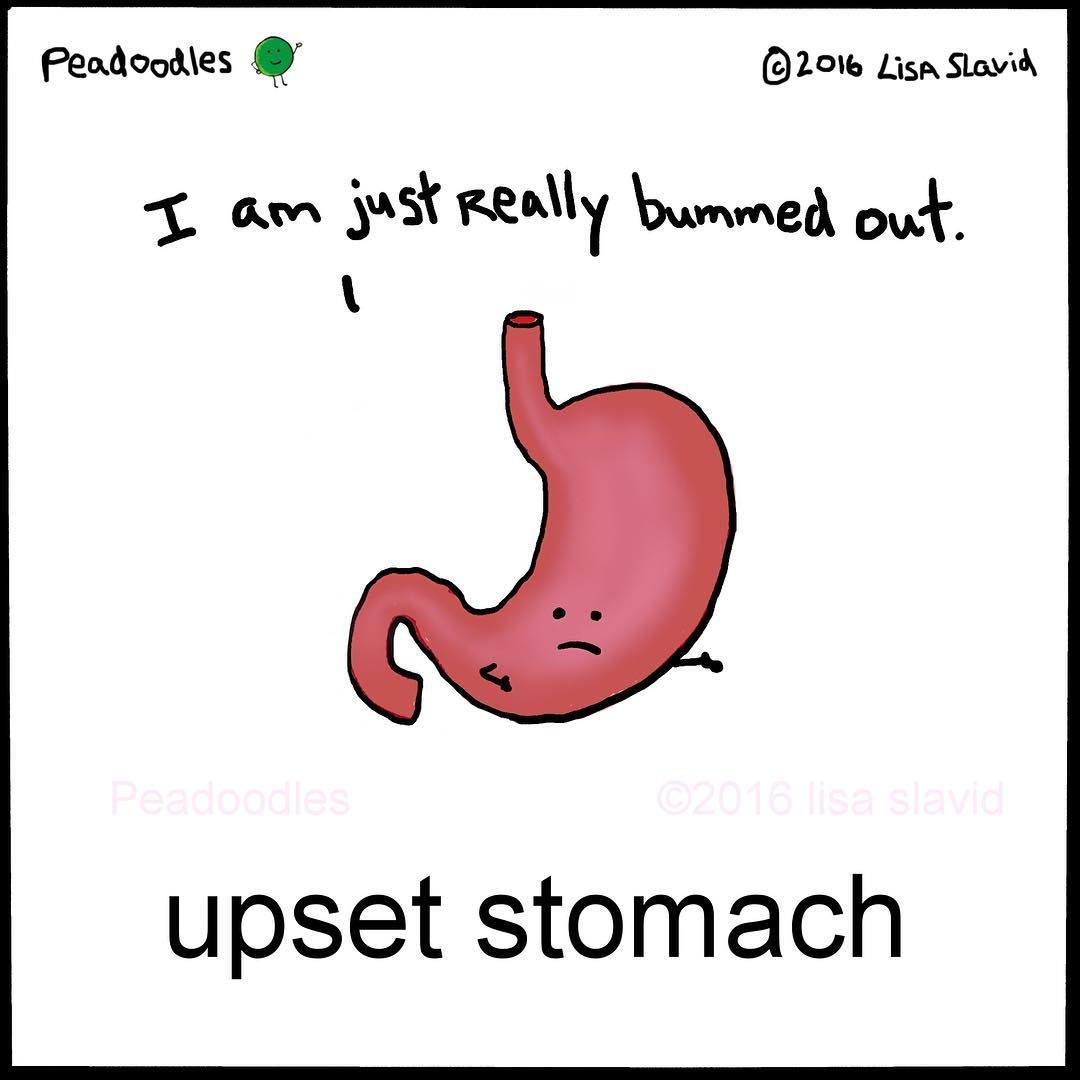 These include:
These include:
- Ginger. A traditional remedy for nausea and cramps, ginger can regulate your body’s prostaglandins. Try ginger tea or lozenges.
- Peppermint. Peppermint extract also helps reduce prostaglandins, which can ease nausea. Many people use peppermint aromatherapy or drink peppermint tea.
- Fennel. The anti-inflammatory properties in fennel may help ease pain and nausea during menstruation. You can consume fennel as a capsule, tea, or tincture.
- Cinnamon. Cinnamon contains a compound known as eugenol that may suppress prostaglandins. This may reduce menstrual bleeding, nausea, and pain.
- Bland foods. If you feel nauseous, eat bland foods until you feel better. Follow the BRAT diet, which includes bananas, rice, applesauce, and toast.
- Controlled breathing. Deep breathing exercises may help relax your muscles and ease nausea.
- Acupressure.
 Nei Guan, or P6, is a pressure point on your inner wrist. Placing pressure here may help reduce nausea, headaches, and stomach upset.
Nei Guan, or P6, is a pressure point on your inner wrist. Placing pressure here may help reduce nausea, headaches, and stomach upset.
In general, it’s not uncommon to feel nauseous during your period. It’s usually caused by high levels of prostaglandins, which increase near the start of your period. The nausea should go away within a few days.
If you have mild nausea, or if you’re waiting to see a doctor, give home remedies a try. Natural treatments like ginger, cinnamon, and acupressure may help ease your nausea.
If your nausea gets worse, or if you feel severe pain, be sure to see your doctor. They can determine what’s causing your symptoms, and help figure out the best type of treatment.
Indigestion (dyspepsia) – Medical center “Lіko-Med”
What is indigestion?
Indigestion (dyspepsia) is a pathological condition caused by indigestion, which is accompanied by pain and burning in the upper abdomen, belching, gas, discomfort or fullness in the stomach after eating. Symptoms of indigestion can be caused by an excess of fatty, spicy and fried foods in the diet, fasting, overeating or fast food, drinking alcohol, caffeine, NSAIDs, stress and smoking. Very often, indigestion is a sign of serious medical problems such as gastroesophageal reflux disease (GERD) and stomach ulcers. Compliance with the diet, the rejection of bad habits, the exclusion of food and drugs that provoke the symptoms of the disease helps to stop an upset stomach. Treating the underlying cause can relieve and eliminate symptoms.
Symptoms of indigestion can be caused by an excess of fatty, spicy and fried foods in the diet, fasting, overeating or fast food, drinking alcohol, caffeine, NSAIDs, stress and smoking. Very often, indigestion is a sign of serious medical problems such as gastroesophageal reflux disease (GERD) and stomach ulcers. Compliance with the diet, the rejection of bad habits, the exclusion of food and drugs that provoke the symptoms of the disease helps to stop an upset stomach. Treating the underlying cause can relieve and eliminate symptoms.
What to expect?
Usually minor indigestion resolves on its own within a few hours. To eliminate unpleasant symptoms helps to take drugs that suppress stomach acid – antacids. In the absence of a positive effect of drugs or a repeated disorder, it is imperative to consult a doctor.
Prevalence.
More than 20% of the world’s population suffers from digestive disorders.
Risk factors.
Excessive alcohol consumption, use of NSAIDs, medications that irritate the stomach, GERD, stomach ulcers.
Treatment.
Treatment for indigestion includes:
– Treat the underlying cause of the disorder (eg, GERD, ulcer).
– Taking antacids or other drugs that suppress acid.
– Avoid spicy, fatty foods, alcohol and caffeine.
– Slow and moderate eating.
Avoidance of stressful situations.
– Quitting smoking and taking NSAIDs.
What can you do yourself?
Self-help for upset stomach consists of:
– Taking antacids and over-the-counter drugs that reduce stomach acid.
– Restrictions on spicy, fatty foods, alcohol and caffeine.
– Moderate, healthy diet.
– Stop taking NSAIDs and smoking.
– Stress prevention.
What makes it worse?
Alcohol, caffeine, NSAIDs, spicy, fatty foods, stress, smoking, overeating, fast food, and eating before bed.
When to see a doctor?
If severe symptoms of indigestion occur or if they worsen in 1-2 days, a doctor should be consulted. Medical attention is needed if vomiting and weight loss occur, in the absence of appetite and black, bloody stools.
Sometimes the symptoms of a heart attack are mistaken for indigestion. Therefore, in case of indigestion, accompanied by shortness of breath, sweating, pain spreading to the jaw, neck and arms, seek medical help immediately.
What to ask the doctor?
1. What can cause my stomach upset?
2. Do I need to take antacids or other medicines?
3. What should I do if the medication does not relieve my symptoms?
4. When will the symptoms disappear?
5. When should a doctor be called?
Diagnosis.
Your doctor will diagnose an upset stomach based on your medical history and physical exam. Additionally, blood tests, feces, x-rays of the stomach and intestines, endoscopy can be prescribed.
Indigestion: symptoms, types, treatment
12-19-2022
Almost all of us have to deal with indigestion from time to time. This is noticeable by annoying symptoms such as abdominal pain, accompanied by a feeling of fullness or nausea, and greatly disrupts the daily routine. Upset stomach symptoms can have different, depending on the complexity and cause. How do these ailments occur? And more importantly, what can we do to prevent indigestion?
Dyspepsia, or indigestion as it is most often called, may be characterized by pain or burning in the upper abdomen, and a feeling of fullness. This is not a single disease, but a series of symptoms that often indicate bad eating habits.
Symptoms may also occur in the presence of existing stomach disease such as ulcers, gastritis, or functional dyspepsia.
In case of indigestion, digestion is impaired for a short time – and attracts attention with similar symptoms. In addition to feeling nauseous, a stomach problem may have the following symptoms:
- bloating;
- burning sensation in the upper part of the stomach;
- nausea and even vomiting;
- rumbling in the abdomen;
- abdominal pain;
- stomach cramps;
- acid eructation;
- heartburn.

What causes indigestion?
The causes of indigestion can be very diverse, and in some cases there may be several causes at the same time. While it is possible that a gastrointestinal disorder may be the cause, it is most often simply the result of overeating, rushing, or stress. Common causes of indigestion include:
- Nutrition and Diet: Spoiled, intolerable or indigestible foods high in fat or sugar can have the same effect: the stomach is unable to process food for digestion and would like to get rid of interfering factors as quickly as possible. Hasty eating combined with insufficient chewing or large bites will also have the same effect.
- Stress can also affect digestion. Stress hormones can cause the body to restrict the functions of the digestive system: the mobility of the stomach decreases. As a result, any factors that cause indigestion can be exacerbated, especially if fatigue or a general unhealthy lifestyle are added to it.
If you have gastrointestinal problems, the symptoms may be mistaken for indigestion but are actually manifestations of other problems: because the stomach cannot adequately protect itself from its own digestive juices.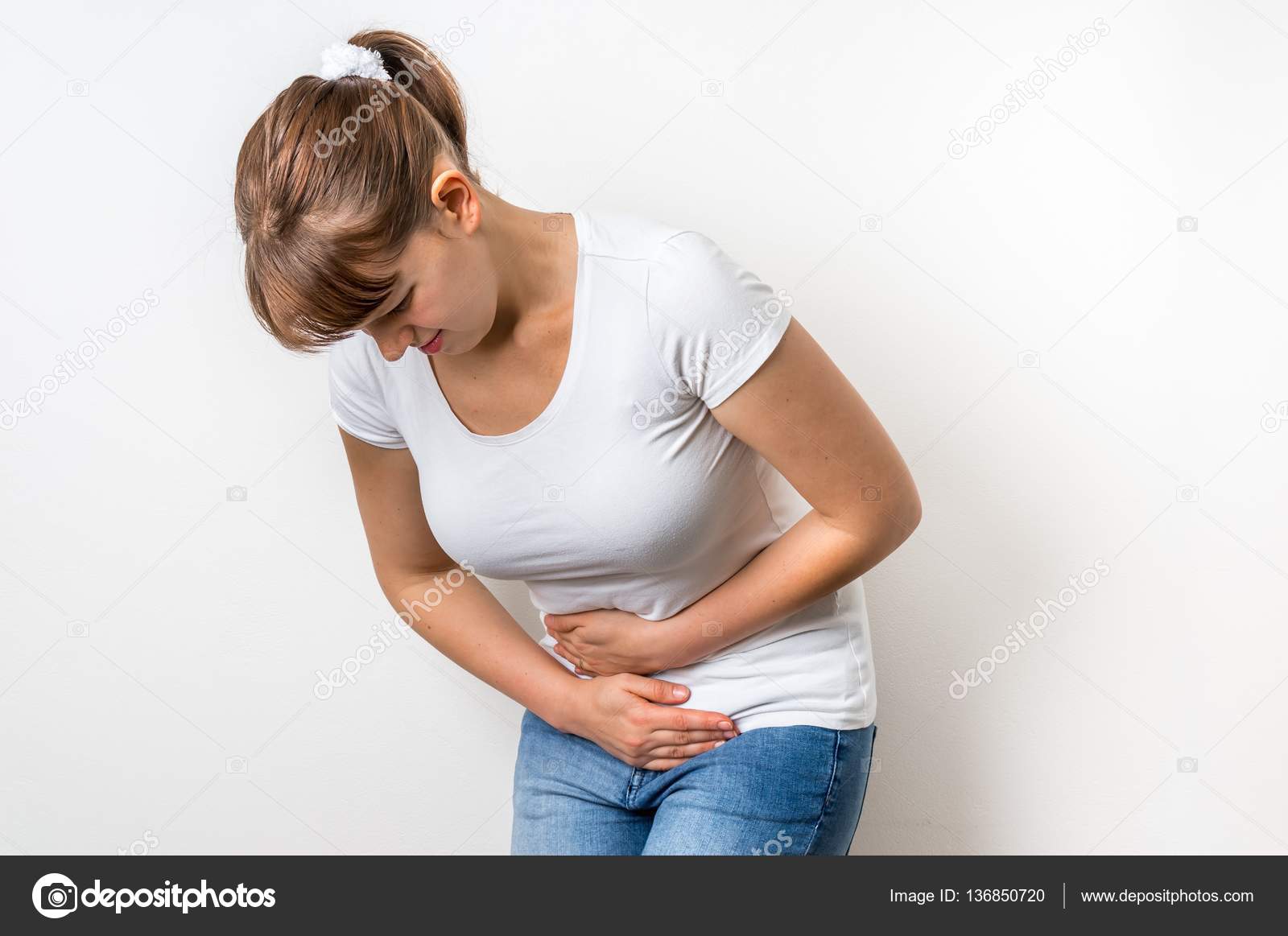 The acids contained can directly affect the gastric mucosa and are therefore responsible for symptoms that can be mistaken for gastric disorders.
The acids contained can directly affect the gastric mucosa and are therefore responsible for symptoms that can be mistaken for gastric disorders.
Therefore, to eliminate the factors that cause your recurring ailments, do not hesitate to contact your doctor. Describe your symptoms as accurately as possible so that the specialist can recommend the appropriate treatment for the gastrointestinal tract.
What is the difference between simple indigestion and functional dyspepsia?
Since the symptoms of indigestion and functional dyspepsia are very similar, it is important to understand the difference. Functional indigestion (symptoms described below) is a chronic functional disorder that persists for more than seven days per month for at least three months. A diagnosis can only be made if any symptoms have occurred within the past six months. The most common symptoms of functional dyspepsia include early satiety, or feeling full quickly with or without food, and severe abdominal pain and burning. Symptoms of functional dyspepsia may gradually worsen, come and go, or persist for some time. It is worth remembering that functional dyspepsia occurs without the presence of a specific somatic disease. It also does not involve bodily processes (such as menstruation, bowel movements, or eating), drugs, or toxins.
Functional indigestion (symptoms described below) is a chronic functional disorder that persists for more than seven days per month for at least three months. A diagnosis can only be made if any symptoms have occurred within the past six months. The most common symptoms of functional dyspepsia include early satiety, or feeling full quickly with or without food, and severe abdominal pain and burning. Symptoms of functional dyspepsia may gradually worsen, come and go, or persist for some time. It is worth remembering that functional dyspepsia occurs without the presence of a specific somatic disease. It also does not involve bodily processes (such as menstruation, bowel movements, or eating), drugs, or toxins.
As mentioned above, indigestion usually resolves within a few hours without the need for medical intervention. But if your symptoms worsen or occur more frequently, you need to see a specialist who will examine and prescribe treatment for indigestion.
How to treat the gastrointestinal tract?
How to deal with indigestion mainly depends on its cause.

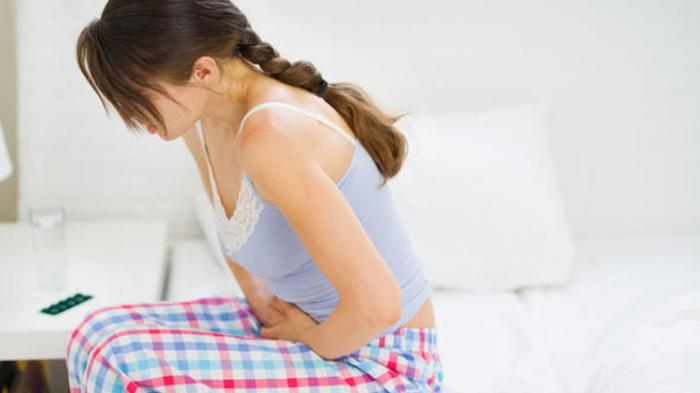 Nei Guan, or P6, is a pressure point on your inner wrist. Placing pressure here may help reduce nausea, headaches, and stomach upset.
Nei Guan, or P6, is a pressure point on your inner wrist. Placing pressure here may help reduce nausea, headaches, and stomach upset.